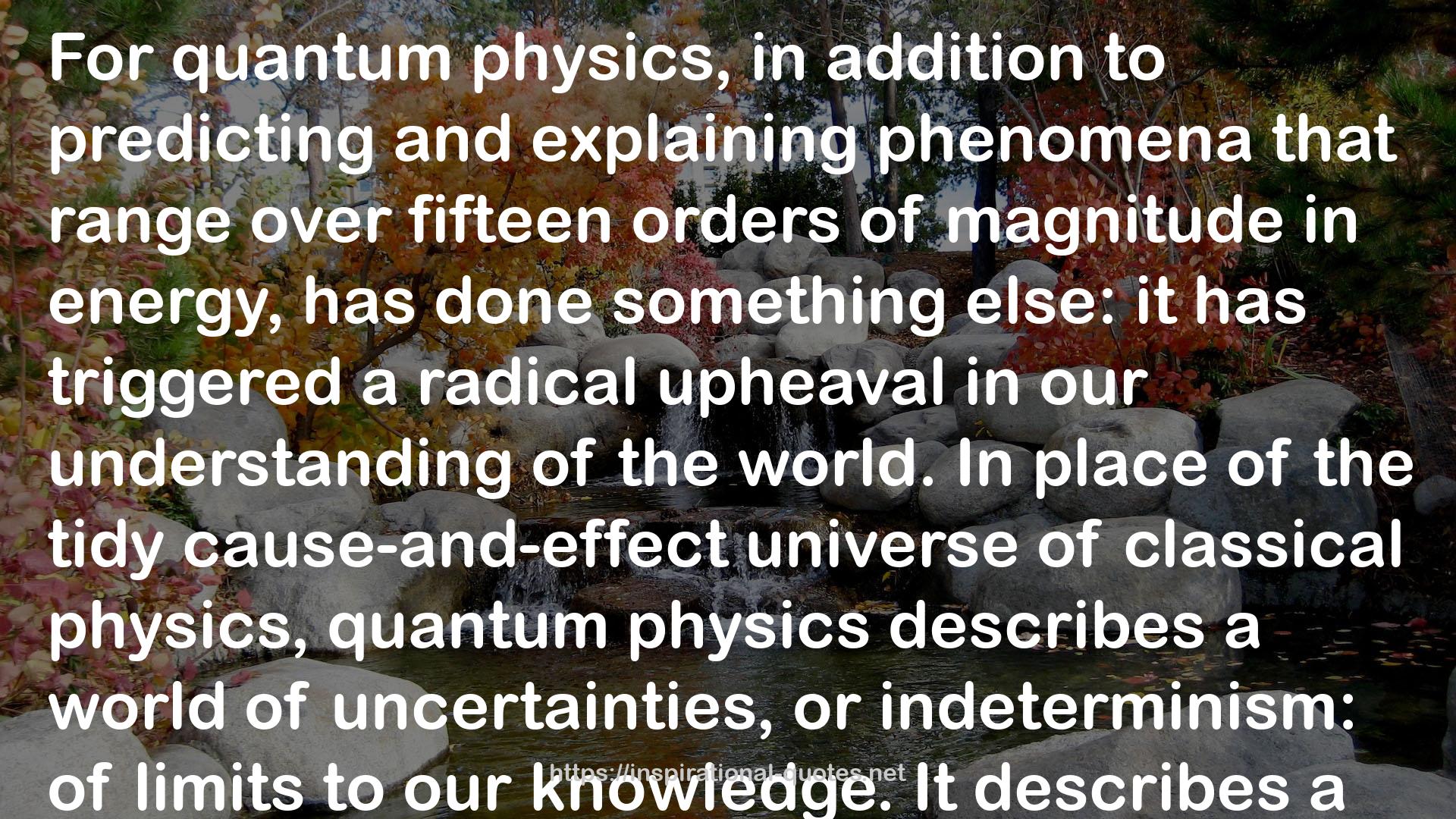" For quantum physics, in addition to predicting and explaining phenomena that range over fifteen orders of magnitude in energy, has done something else: it has triggered a radical upheaval in our understanding of the world. In place of the tidy cause-and-effect universe of classical physics, quantum physics describes a world of uncertainties, or indeterminism: of limits to our knowledge. It describes a world that often seems to have parted company with common sense, a world at odds with some of our strongest intuitive notions about how things work. In the quantum world, subatomic particles have no definite position until they are measured: the electron orbiting the nucleus of an atom is not the pointlike particle we usually imagine but instead a cloud swathing the nucleus. In the quantum world, a beam of light can behave as a wave or a barrage of particles, depending on how you observe it. Quantities such as the location, momentum, and other characteristics of particles can be described only by probabilities; nothing is certain. “It is often stated that of all the theories proposed in this century, the silliest is quantum theory,” the physicist Michio Kaku wrote in his 1995 book Hyperspace. “In fact, some say that the only thing that quantum theory has going for it is that it is unquestionably correct. "
― Jeffrey M. Schwartz , The Mind and the Brain: Neuroplasticity and the Power of Mental Force
